Goldpine
Lowburn Cherries Limited Partnership: Leading-Edge Cherry Development
Central Otago is known for its cherry-growing capabilities, with 90% of New Zealand’s cherries planted within the region. Based in Cromwell, Lowburn Cherries is one of two cherry orchards managed by Nick Common and their company; Advanced Horticulture Limited. What was once part of a large merino sheep property in the Lowburn Valley north of Cromwell, is now being developed into a 50 canopy hectare cherry orchard.
Lowburn Cherries is a project that began nearly two years ago when Nick started planning, designing and organising the project alongside development specialists at Fortress Farms. With the first trees put in the ground in July 2023, they are halfway through their overall goal of 50 hectares planted in cherries by the end of the year.
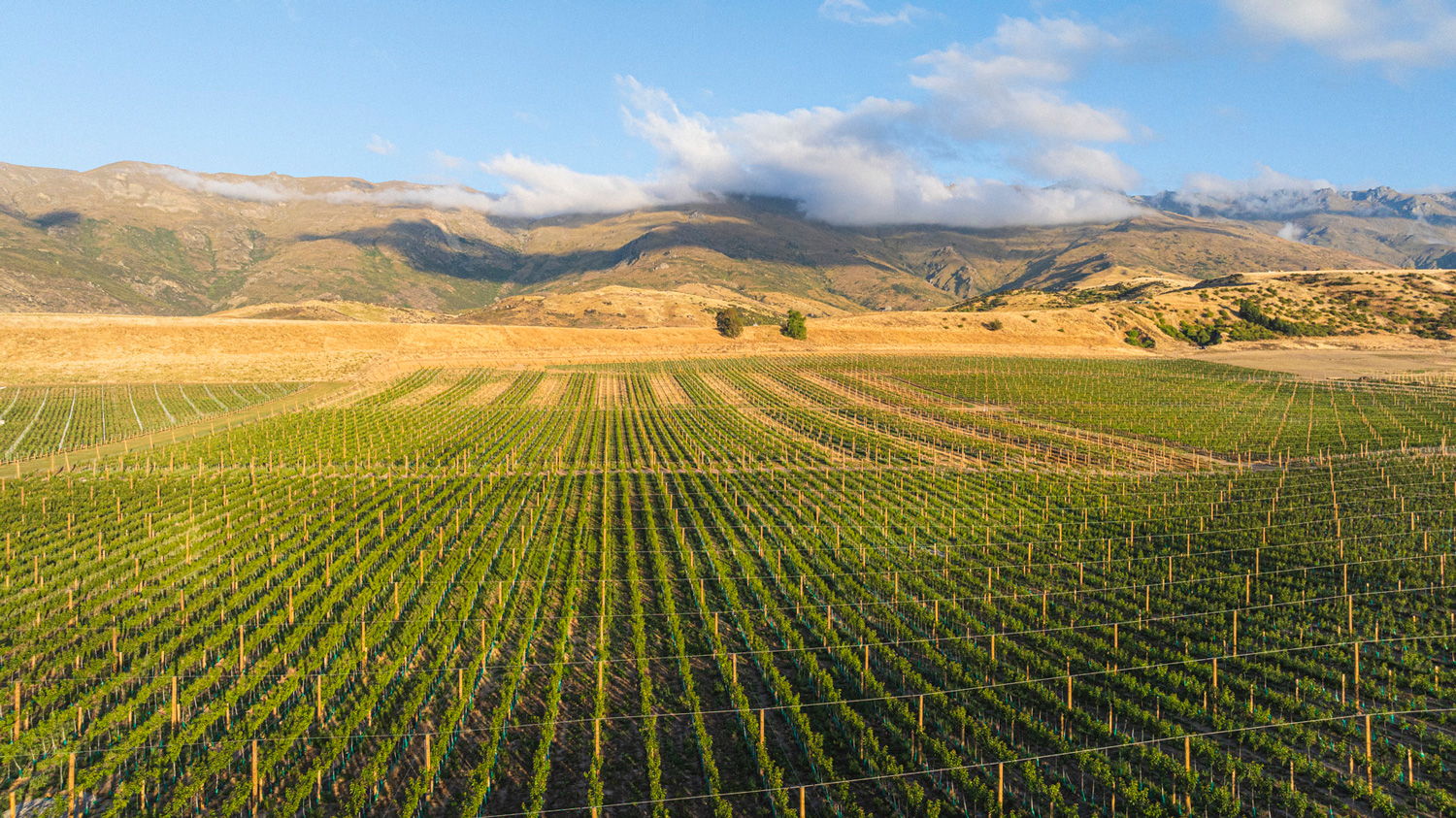
Originally residing north of Auckland, Nick helped develop a large avocado orchard over a seven-year period. Following that, he took on this project around two years ago. With all of the back and forward travel that the job required, Nick decided to relocate to Cromwell full-time ten months ago to oversee the development of the two cherry sites.
“The major difference between avocados and cherries is the timeframe. Avocados are an active tree all year round, and they are an evergreen species. The avocado picking season starts in July and goes right through until January. Whereas cherries have a very short and intensive harvest season over a couple of months, and they have a dormancy in the winter. The theory is that I can have a bit of a break in the wintertime when the trees are dormant, as it gets a bit quieter. But it’s all happening at the moment – installing the infrastructure with posts and wires for the overhead netting and also setting up a trellis structure to train the trees,” Nick said.
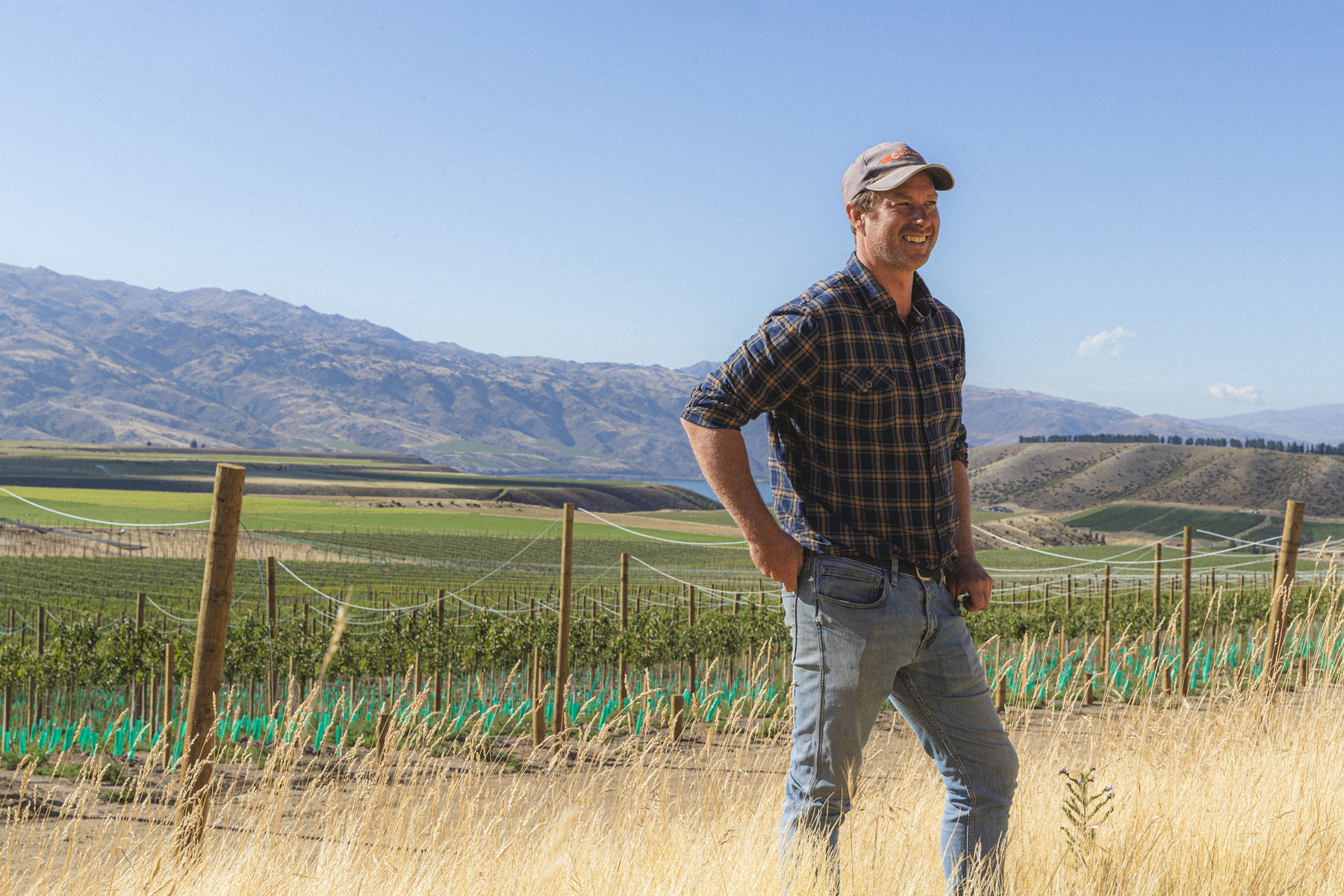
There are seven varieties of cherries to be planted, and production is from mid-December through to the end of January, with the first harvest forecasted for a couple of years’ time. Predominantly grown for the export market for the likes of China, Taiwan and Vietnam, cherry varieties are selected in order to spread the harvest season and supply the market over a longer period. This is really important, particularly with the date of the lucrative Chinese New Year changing each year. Lowburn Cherries will also supply the New Zealand market throughout the Christmas and summer period.
Alongside their Lowburn property, they also have a bigger cherry orchard based in Clyde that is now coming into production with trees aged around three to four years old. They recently completed their first major harvest in February of this year, which equated to 200 tonnes of cherries. The Clyde orchard is still under development, with hopes of having all the overhead netting infrastructure completed within the next couple of years.
At Lowburn Cherries, they have three permanent staff members but are hoping to double this number when the orchard gets busier and is in full production mode. There are currently 12 contractors working on the netting and another 12 seasonal workers on site to do various jobs.
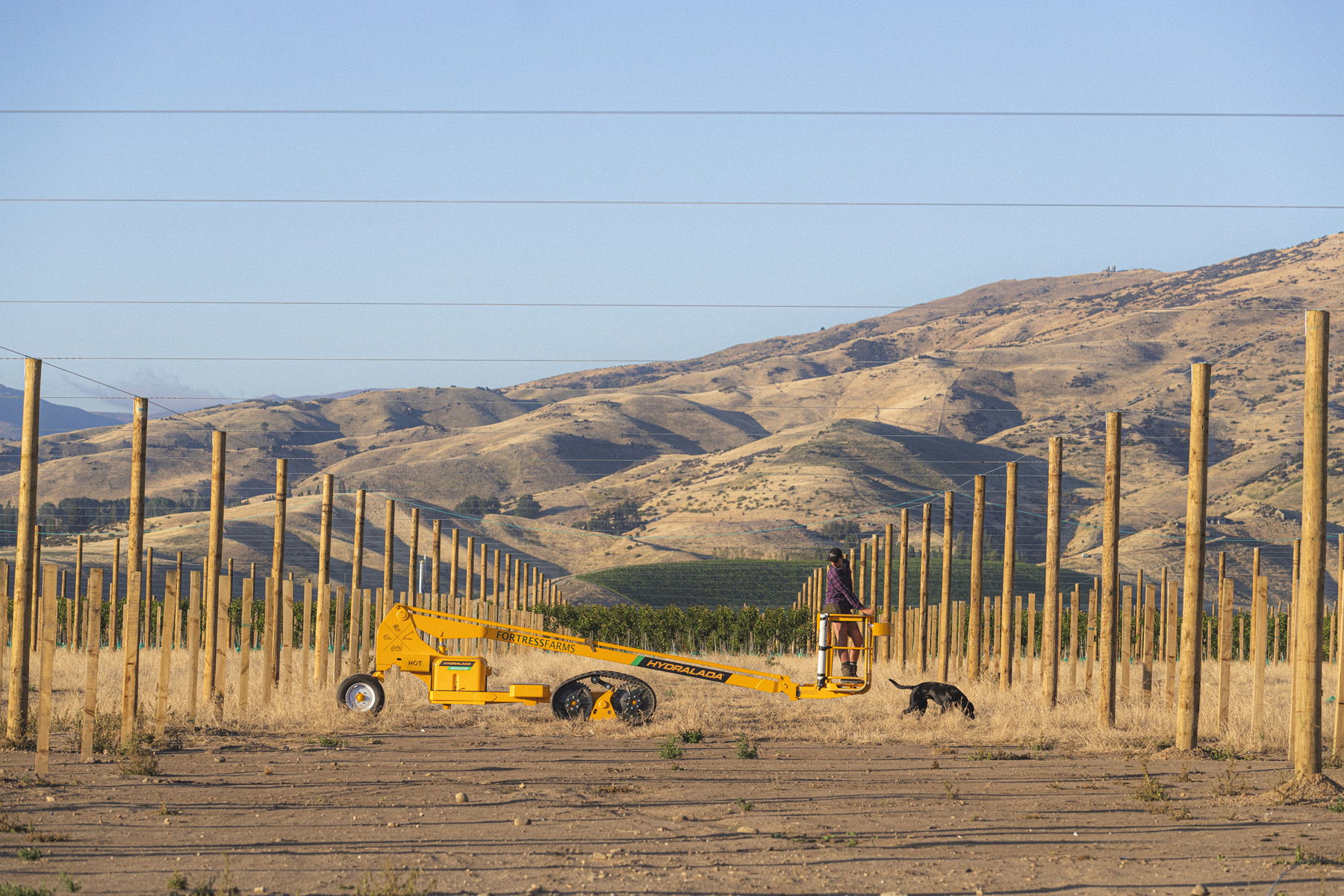
“With this development, there are some investors that have a very strong focus on environmental, social, and governance (ESG) responsibilities. There’s an ESG component as part of our contract to develop and manage this orchard. Part of their ESG requirements is minimising carbon use, and what feeds into that is what carbon we’re storing up in the orchard. So, we are obviously planting a lot of trees - about 120,000 cherry trees here, and then quite a lot of natives for biodiversity up on the banks that are unsuitable for cherries.”
“Another big part of it is the amount of timber that we’re putting in here. A massive amount of wood is being put in, which is stored carbon. We know the volume of wood we’re putting into the orchard equates to around 2,000 tonnes of carbon which is the equivalent to taking over 1,100 cars off the road for a year. So yeah, it was quite an interesting fact, actually.”
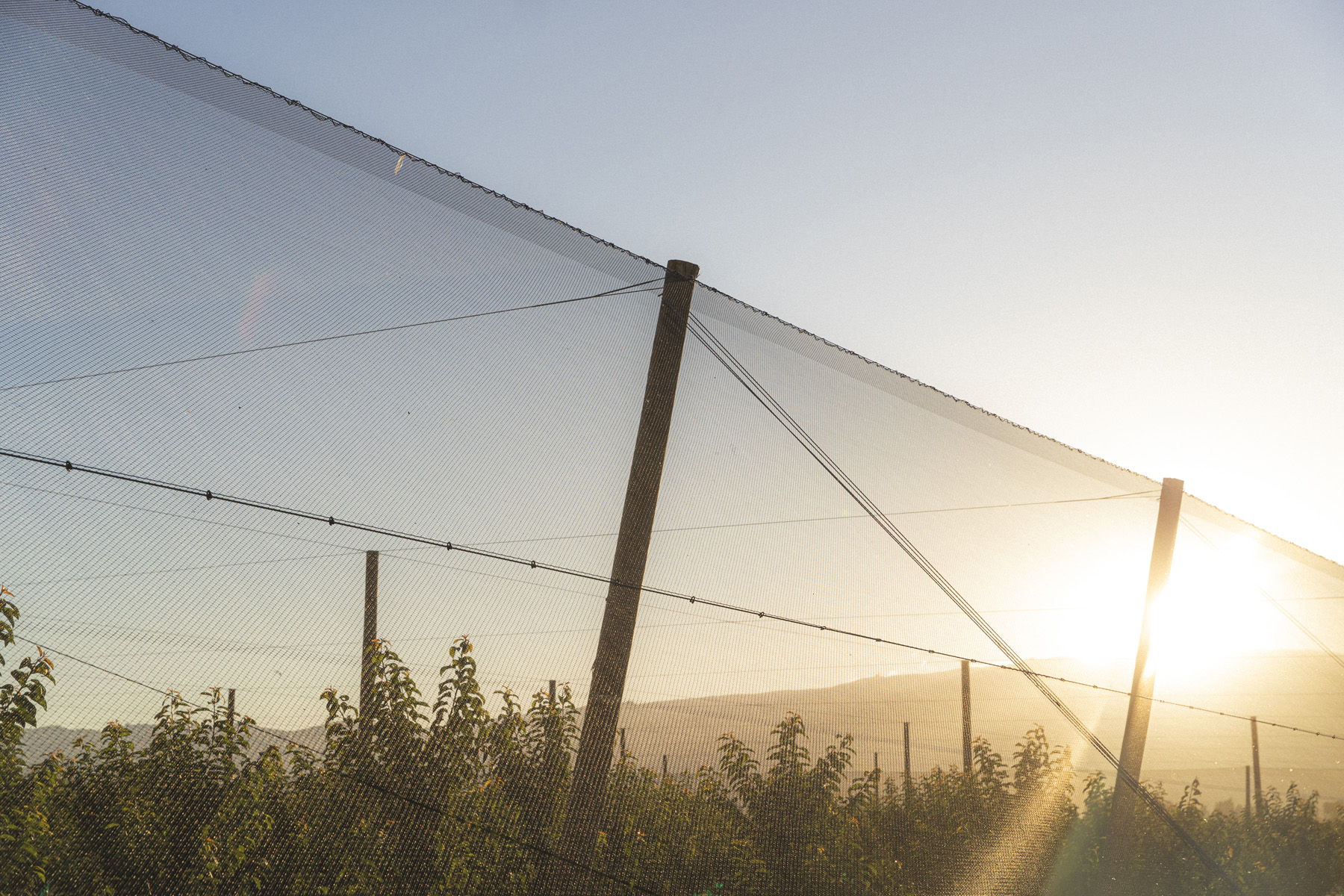
“In terms of using wood for this type of structure, there are other options out there, such as steel and concrete, but wood really is a fantastic product for this application. It’s really strong, but it’s also got some flexibility, so it can handle a bit of stress without breaking. Whereas some of the more rigid structures, like steel, for example, if there was a massive snowfall or hail event on the netting canopy, a steel structure could actually snap or the steel could buckle and bend much easier than wood. So we’re very much in favour of using wood for this purpose.”
Lowburn Cherries is not like your traditional cherry orchard, as they have implemented 25 hectares under a pergola system, which Nick emphasised is certainly leading edge for New Zealand. Like kiwifruit, this system is being used in other parts of the world but is not really seen as much here.
“It’s a two-metre-high structure with wires running down the rows. The cherry branches are brought down onto those trellis wires and produce fruit, which is about head height. It’s really intensive planting. So, with over 3,000 trees per hectare under that system, the idea is to produce smaller trees, which are easier to manage, have higher production, and produce fruit a lot quicker than a standard growing system,” Nick said.
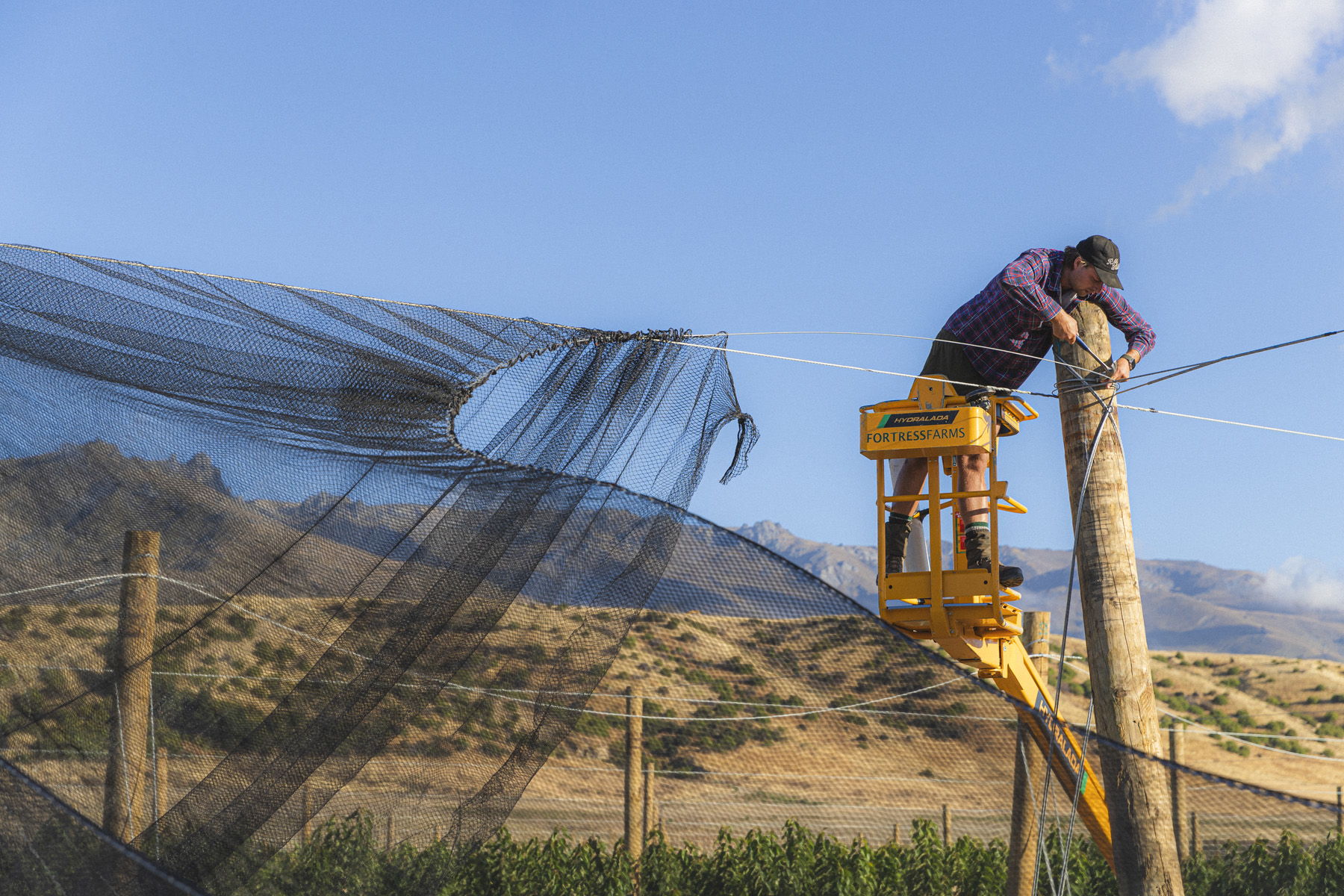
“We’re also trying to minimise the cost of labour and simplify that by having what we call a pedestrian orchard, where everything is done from the ground. You won’t need any ladders, so the efficiency of production is a lot higher. Labour costs are a significant part of horticulture now, so we’re trying to minimise that,” he added.
In Central Otago, outdoor activities are right on your doorstep. When Nick is able, he likes to unwind by going for bush walks and getting up in the mountains. Working in horticulture might be a never-ending job, but as Nick mentioned, it’s also a way of life.
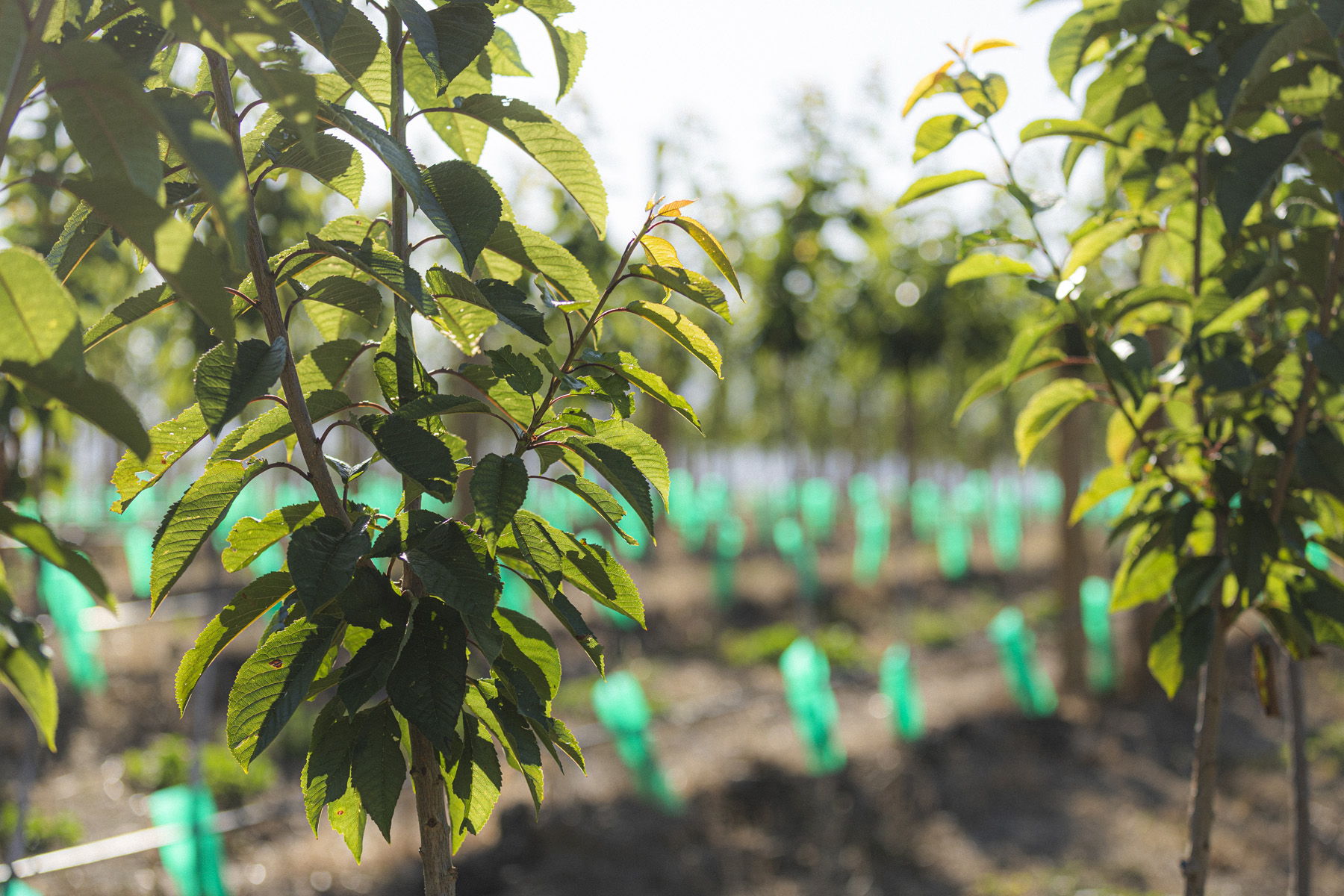
“The best thing about working in horticulture is watching things grow. This property was just a paddock of weeds 12 months ago, and now look at it. We’re planting trees and turning them into something special that’s highly productive. We’re employing people and investing money in the local community. It’s a completely changed landscape – from preparing and planting, to soon being able to produce fruit off it.”

.png)

